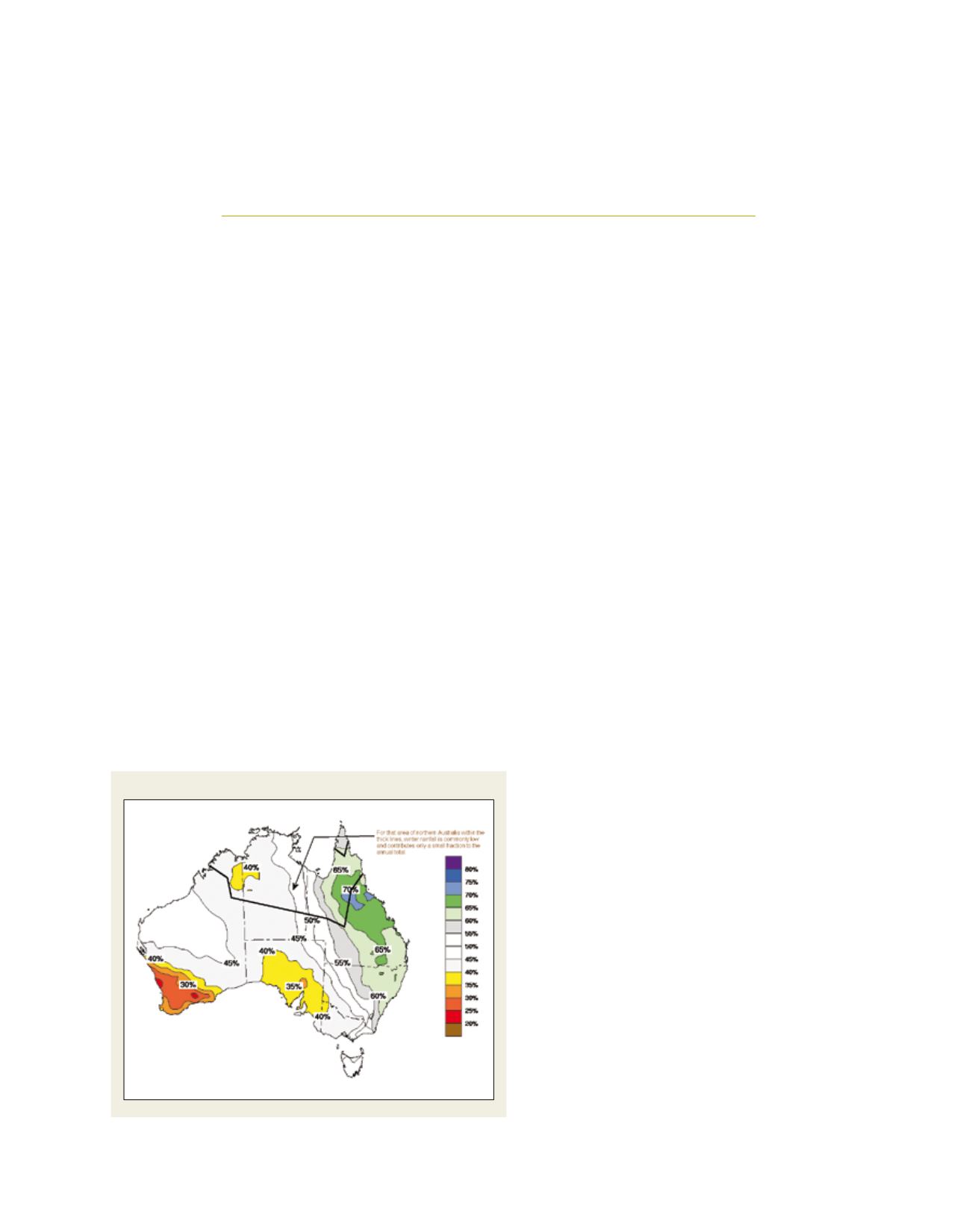

[
] 232
A user-centred design approach
to the Seasonal Climate Outlook
Elizabeth Boulton, Andrew Watkins and David Perry, Climate Information Services, Australian Bureau of Meteorology
T
he Australian Bureau of Meteorology’s Seasonal Climate
Outlook (SCO) product provides a forecast for the likely
shifts in temperature and rainfall for the coming three
months and is released on a monthly basis. Information is
presented in probabilistic terms; reflecting the probability or
likelihood that rainfall or temperature will be above the long-
term median.
The website includes an ancillary product – the El Nino Southern
Oscillation (ENSO) Wrap-Up, also known as the El Niño / La Niña
Status Update.
1
The ENSO Wrap-Up provides detail on key indica-
tors such as cloudiness, trade winds, sea surface temperature, and
the Southern Oscillation Index (SOI). Indirectly related to ENSO,
and important for predicting the Australian climate, information
on the Indian Ocean Dipole and the results of a range of inter-
national climate models is also provided. All of this information
is distilled into a short written description on the status of key
climate drivers and their prediction.
Both the SCO and the ENSO Wrap-Up are popular with the
Australian community, industry and Government. Many of Australia’s
economically important industries, such as tourism and agriculture,
are crucially dependent on seasonal forecasting.
2
Each month (for the
SCO) and fortnight (for the ENSO Wrap-Up), an e-mail with a link
to the updated website is distributed to a wide range of
stakeholders, including media outlets, Ministers, many
Federal, State and local government agencies and a range
of stakeholders in sectors such as finance, emergency
services and aviation. Advance warning of likely rainfall
and temperature facilitates risk management decisions
on planting activity, fertilization, irrigation regimes and
dam management, and supports forward planning in the
emergency services, insurance and tourism sectors.
Seasonal Climate Outlook Review Project
The Bureau’s National Climate Centre (NCC) had
received anecdotal evidence suggesting that users found
the SCO product difficult to understand. A review of
international efforts to convey seasonal forecasts
3
found
that other agencies presented information in a similar
way and thus were likely to face the same communi-
cation issues as Australia. At the same time, the NCC
was undertaking stakeholder engagement training
and revising its stakeholder engagement plans. All of
these deliberations led to a decision to launch the SCO
Review Project in October 2010.
The multidisciplinary project team, led by a generalist
Project Manager, included scientists from the Bureau of
Meteorology’s Climate Prediction subsection, communi-
cations experts from the Communication and Adoption
Team (CAT) and a marketing advisor from the Bureau’s
Public Relations section. It also utilized the services of
two specialist consultants: a marketing company and
a user-centred design (UCD) company. The aim of the
project was to investigate users’ experience with the SCO
and determine how it could be improved.
An iterative process
The project was conducted over 11 months between
September 2010 and July 2011. It involved five stages of
market research, with the user-centred design activity
occurring in an iterative fashion, in response to infor-
mation gained at each stage of the market research. This
allowed for the proposed SCO designs to move from
broad concepts to more detailed designs.
Stage 1: Interviews with 10 internal Bureau experts
The aim here was to mine existing internal knowledge
so that the marketing research agency staff could be as
informed as possible before they approached external users.
C
ommunities
Chance of exceeding the median rainfall June to August 2012
Source: National Climate Centre
















